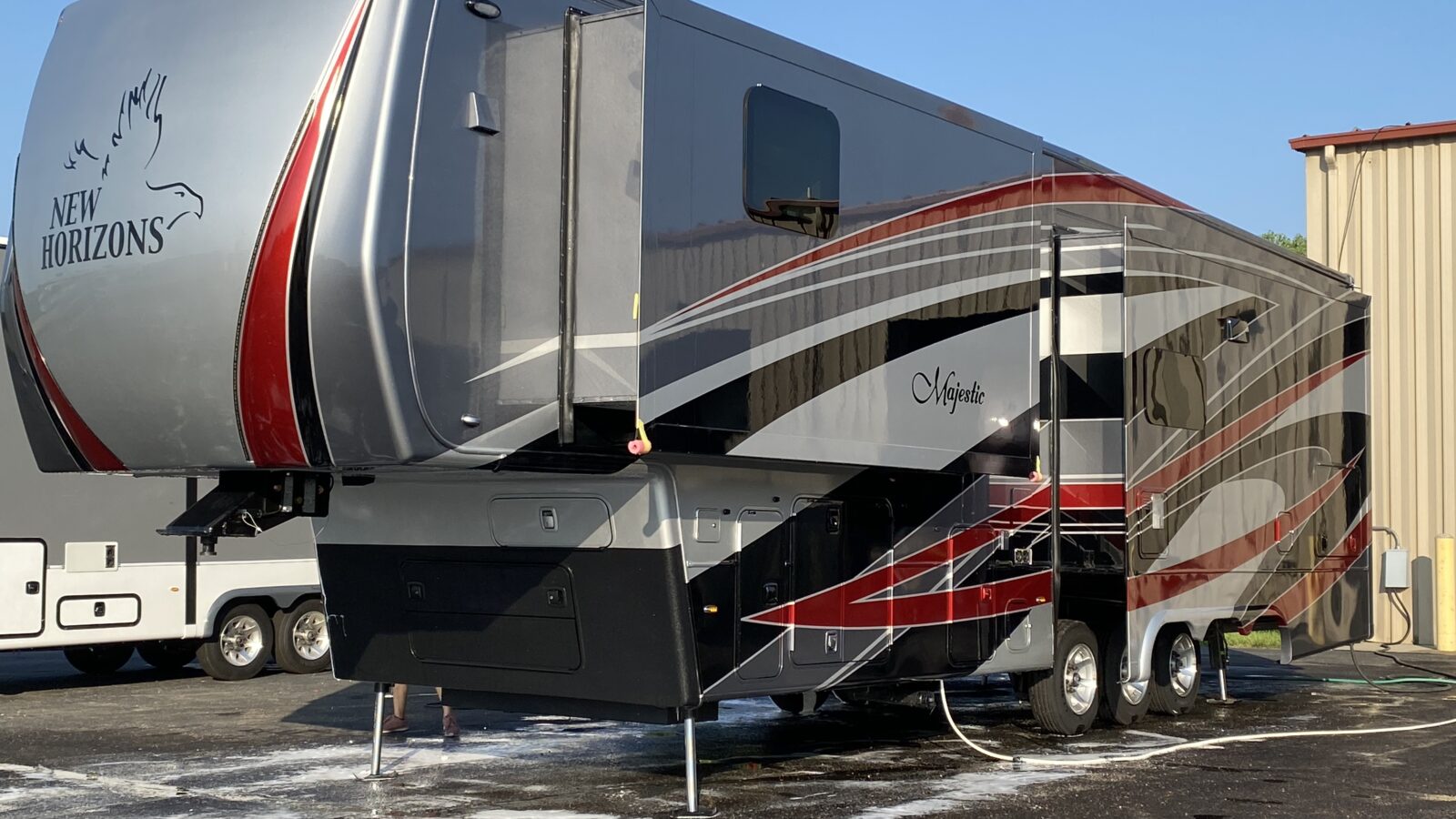New Horizons builds RVs to withstand decades of full-time living, but the best way to keep your coach at the peak of comfort and performance is to conduct regular maintenance.
We’ve compiled some handy checklists to help keep your New Horizons RV in tip-top shape. Please keep in mind, that you may have systems in place that need maintenance that are not listed here.
Before each trip
- Examine tires — Check pressure in each tire and add air as needed. Check for wear and tear, bubbling or other signs of damage.
- Check lights — Make sure headlights, taillights and brake lights are functioning.
- Clear roof debris — Clear debris that can fly off during travel, and retract roof-mounted antennas.
Monthly
- Run generator — Run at about 50% load at least once a month to keep gas from going bad.
-
Top off batteries — Check water levels and refill with distilled water. Clean terminals.
- Clean air conditioner — Clean vents and intake. Clean or replace air filters.
- Check under RV — Look for signs of leaks. Make sure clamps and hoses are secure.
- Test safety equipment — Test and clean smoke detector and carbon monoxide detector and replace batteries as needed. Check fire extinguisher.
- Lubricate slides — Lubricate to ensure slides pull in and out smoothly.
- Check seals — Check external seals for water infiltration and use RV sealant as needed.
Quarterly
- Clean and wax — Wash and wax to remove dirt and protect paint.
- Treat metals — Lubricate metals that come into contact with other metals, such as jacks, hitches and fold-up stairs.
- Lubricate hinges and locks — A household oil such as WD-40 works well for hinges. Use a dry graphite lubricant on locks.
- Inspect appliances — Do a functional and visual inspection of each major appliance. Turn on burners, check refrigerator temperature, etc.
Yearly
- Service brakes — Have your brakes serviced by a professional every 12 months or 12,000 miles.
- Reseal exterior — Reseal exterior to prevent future leaks.
- Clean water system — Dump a cup of bleach into the fresh tank, fill it with potable water, let it sit for a day and drain. Fill the tank with potable water again and run the faucets until the bleach smell is gone. Clean black water tank as needed.
- Service furnace — Have it serviced to ensure it’s in good working order.
- Flush water heater — Flush water and check anode if equipped with one.
- Test electrical system — To run basic tests, you should be connected to shore power. Check your circuit breaker and each fuse, then test each electric outlet, light and appliance, as well as stove and furnace electric starters. Check voltage on your battery to ensure it’s charging properly.
- Test propane system — Use the leak detection system’s test feature to make sure the system is powered. Then open your main propane valve, close doors and windows and wait for about two hours. If the alarm goes off, you have a propane leak, which needs immediate attention.


